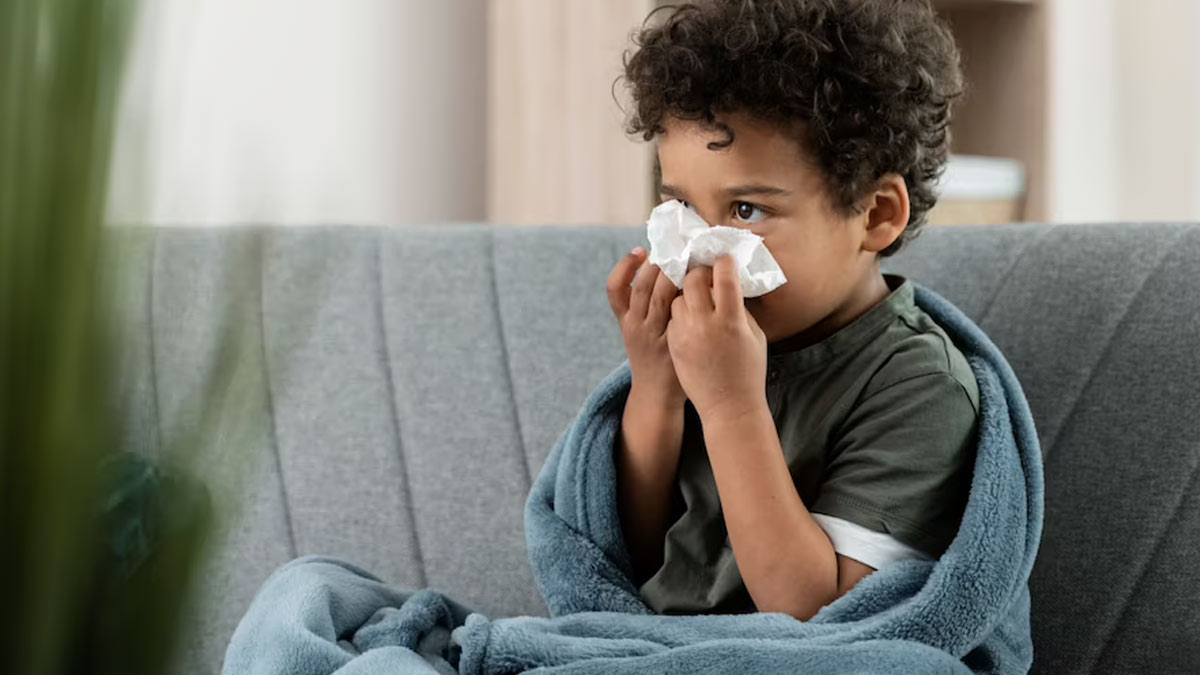
As seasons shift and the chill sets in, parents often find themselves dealing with their children's bouts of respiratory infections. Among these, the common cold and Respiratory Syncytial Virus (RSV) stand out as two frequent culprits. While these illnesses share some symptoms, they possess distinct characteristics that set them apart. As a concerned parent or caregiver, being able to distinguish between the two is essential for providing the right care. Dr Suresh Kumar Panuganti, Lead Consultant-Paediatric Critical Care and Pediatrics, Yashoda Hospitals, Hyderabad sheds light on their symptoms and offers guidance to differentiate between them.
Common Cold: More than Just a Runny Nose
"As monsoon and winter seasons set in, common colds and flu become prevalent issues, especially among school-going children," said Dr Panuganti. He said that these ailments are typically caused by viruses, with rhinovirus being the most common culprit. "The incubation period averages around two days (though it can range from 1-4 days), leading to symptoms like runny or stuffy noses and sore throats," he added.

"Occasionally, a persistent cough might accompany these symptoms, sometimes causing mild chest discomfort. However, it's important to note that high fever, headaches, and breathlessness are not common indicators of the common cold. Most affected children can continue their regular activities with minimal hindrance," he highlighted.
Also Read: Signs That Indicate Common Cold Is More Serious
Understanding the Respiratory Syncytial Virus
On the other hand, RSV is another widespread viral infection affecting all age groups, from infants to the elderly. In India, when researchers looked at how many kids had RSV in hospitals, they found that the numbers were different in different studies, as per the Indian Journal of Medical Microbiology. In some studies, around 5-54% of kids had RSV. When they checked in communities, they found that around 8-15% of kids had RSV.
Dr Panuganti said that RSV is particularly prevalent in premature babies and those with preexisting conditions, such as heart problems. "This condition has a longer incubation period, typically lasting 5-8 days," he added.

"Notably contagious, it can survive on surfaces for several hours and on unwashed hands for up to an hour. The virus spreads rapidly among children through coughing, sneezing, and sharing objects that have been in contact with an infected individual's mouth, nose, or eyes," he highlighted.
"RSV infections are characterised by high fever along with chills, accompanied by significant fatigue. The virus can cause inflammation and swelling in the airways, potentially leading to bronchiolitis and ensuing breathing difficulties," suggested Dr Panuganti. He added that in the case of infants, RSV infections might trigger episodes of breath-holding, medically known as apnoea. "In rare cases, severe complications like pulmonary haemorrhage, bleeding within the lungs, can also occur," he said.
Comparing Symptoms of the Common Cold and RSV
In terms of symptoms, comparing common colds to RSV infections reveals distinctions. "While common colds might bring on occasional fever, running noses (often with stuffiness), and sporadic coughing, RSV infections tend to induce common symptoms like a runny nose, coughing (often causing discomfort), and high-grade fever often accompanied by chills," stated Dr Panuganti.
He added that unlike common colds, RSV infections can commonly lead to breathing difficulties, especially among preterm infants and the elderly. Complications are more frequent with RSV, including sinus congestion and earaches in young infants.
Also Read: Respiratory Problems In Children During Monsoon: What Parents Should Know
Management of Common Cold and RSV
When it comes to managing these conditions, both common colds and RSV infections call for supportive therapies. "Preventive measures include isolating affected children from others, promoting frequent hand-washing, emphasising personal hygiene, and ensuring proper hydration," suggested Dr Panuganti.
He added that medical consultation is essential when symptoms are severe or persistent. This is particularly crucial in scenarios involving:
- High fever accompanied by chills
- Severe stuffy nose and persistent cough disrupting sleep
- Breathing difficulties
- Refusal of feeds
"For infants, immediate medical attention is vital to avert potential complications," he concluded.
Conclusion
While common colds and RSV infections may exhibit some overlapping symptoms, understanding their distinct characteristics empowers parents and caregivers to offer appropriate care and seek medical help when needed.
[Disclaimer: This article is for informational purposes only. Consult your healthcare provider to get a thorough diagnosis and treatment as per your health needs.]
Image Credits: freepik







